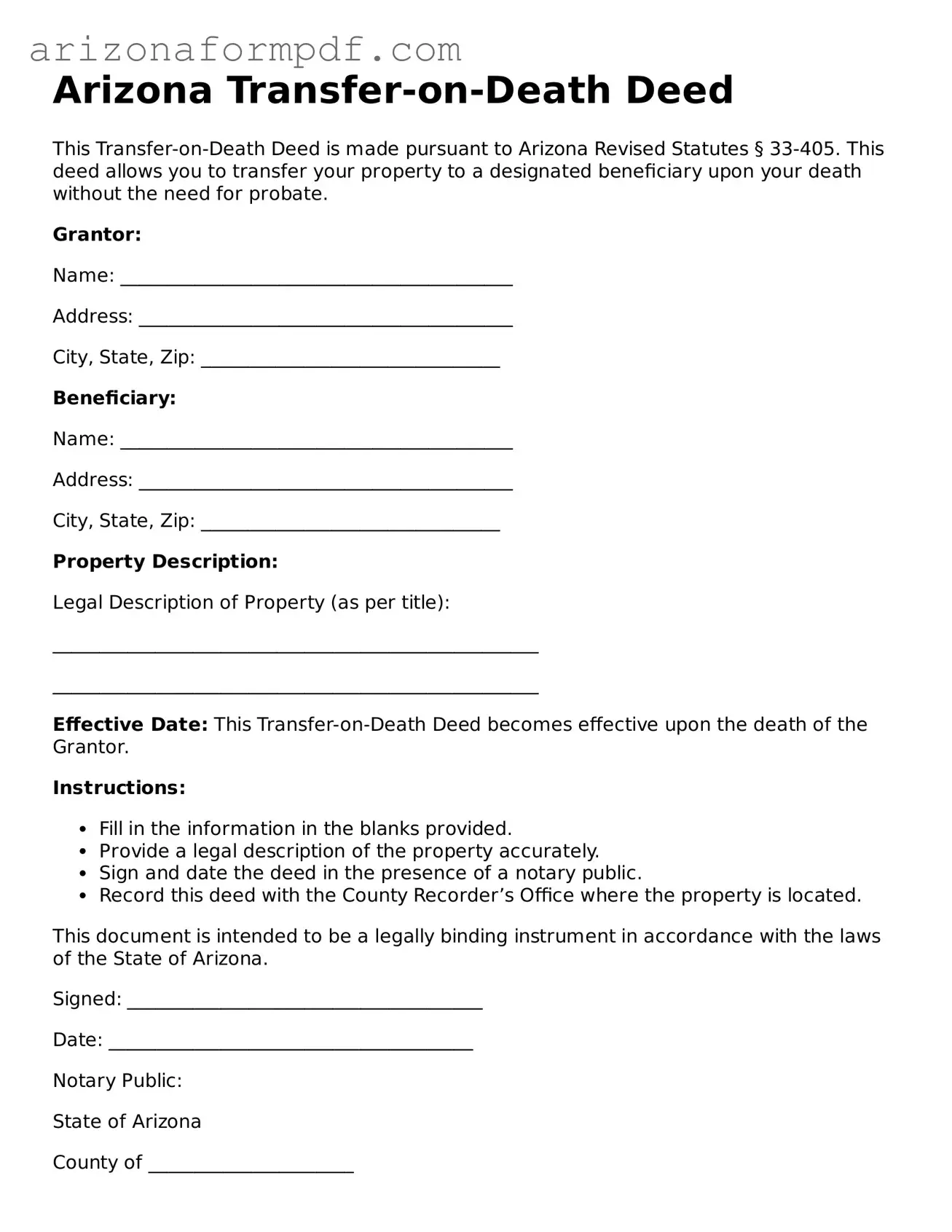What is a Transfer-on-Death Deed in Arizona?
A Transfer-on-Death Deed (TOD Deed) is a legal document that allows property owners in Arizona to designate beneficiaries who will receive their property upon the owner's death. This deed does not transfer ownership during the owner's lifetime, allowing the owner to retain full control over the property until death.
How does a Transfer-on-Death Deed work?
When the property owner passes away, the designated beneficiary automatically inherits the property without the need for probate. The TOD Deed must be properly executed and recorded with the county recorder's office to be valid. This process simplifies the transfer of property and can save time and costs associated with probate proceedings.
Who can be named as a beneficiary in a Transfer-on-Death Deed?
Any individual or entity can be named as a beneficiary in a TOD Deed. This includes family members, friends, or even charitable organizations. However, it is important to ensure that the beneficiary is legally capable of inheriting property and that their information is accurately recorded in the deed.
Can I change or revoke a Transfer-on-Death Deed after it has been created?
Yes, property owners can change or revoke a TOD Deed at any time during their lifetime. To do this, the owner must create a new TOD Deed or file a revocation form with the county recorder's office. It is crucial to follow the proper legal procedures to ensure that the changes are valid.
Are there any limitations on the type of property that can be transferred using a Transfer-on-Death Deed?
In Arizona, a TOD Deed can be used for most types of real estate, including residential and commercial properties. However, it cannot be used for personal property such as vehicles or bank accounts. Additionally, the property must be held in the owner's name and cannot be subject to certain encumbrances, such as a mortgage that prohibits transfer.
What are the tax implications of a Transfer-on-Death Deed?
Generally, the property transferred via a TOD Deed is not subject to income tax at the time of transfer. However, the beneficiary may be responsible for property taxes and other related expenses once they inherit the property. It is advisable for beneficiaries to consult a tax professional to understand their specific tax obligations.
Do I need an attorney to create a Transfer-on-Death Deed?
While it is not legally required to have an attorney to create a TOD Deed, consulting with one can be beneficial. An attorney can provide guidance on the specific requirements and help ensure that the deed is executed correctly, minimizing the risk of future disputes or issues.
How do I record a Transfer-on-Death Deed in Arizona?
To record a TOD Deed, the property owner must complete the deed form, sign it in front of a notary, and then submit it to the county recorder's office in the county where the property is located. There may be a small fee for recording the deed. It is important to keep a copy of the recorded deed for personal records.
What happens if there are multiple beneficiaries named in a Transfer-on-Death Deed?
If multiple beneficiaries are named, the property will be divided among them according to the terms specified in the deed. If the deed does not specify how the property should be divided, Arizona law will govern the distribution. It is advisable to clearly outline the intentions in the deed to prevent any misunderstandings among beneficiaries.
